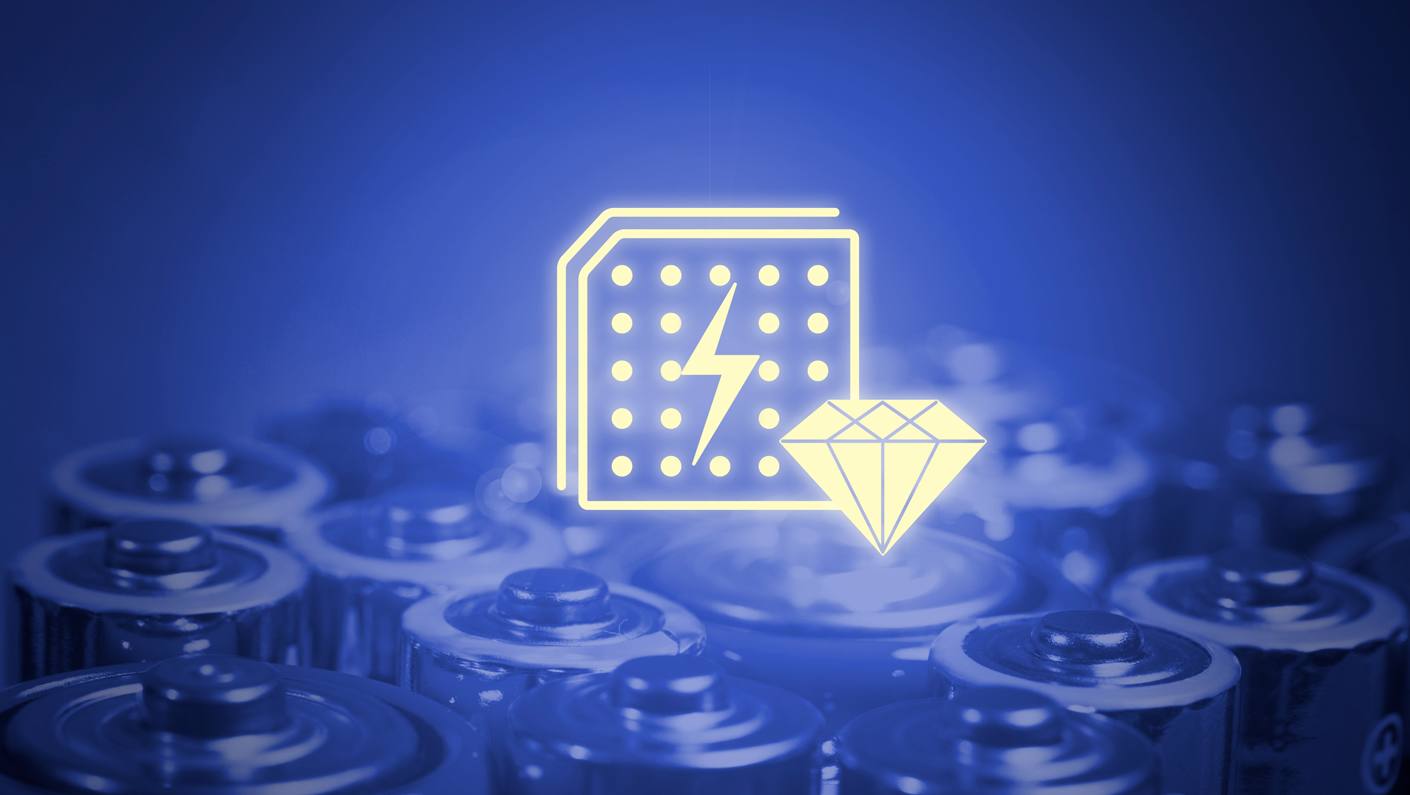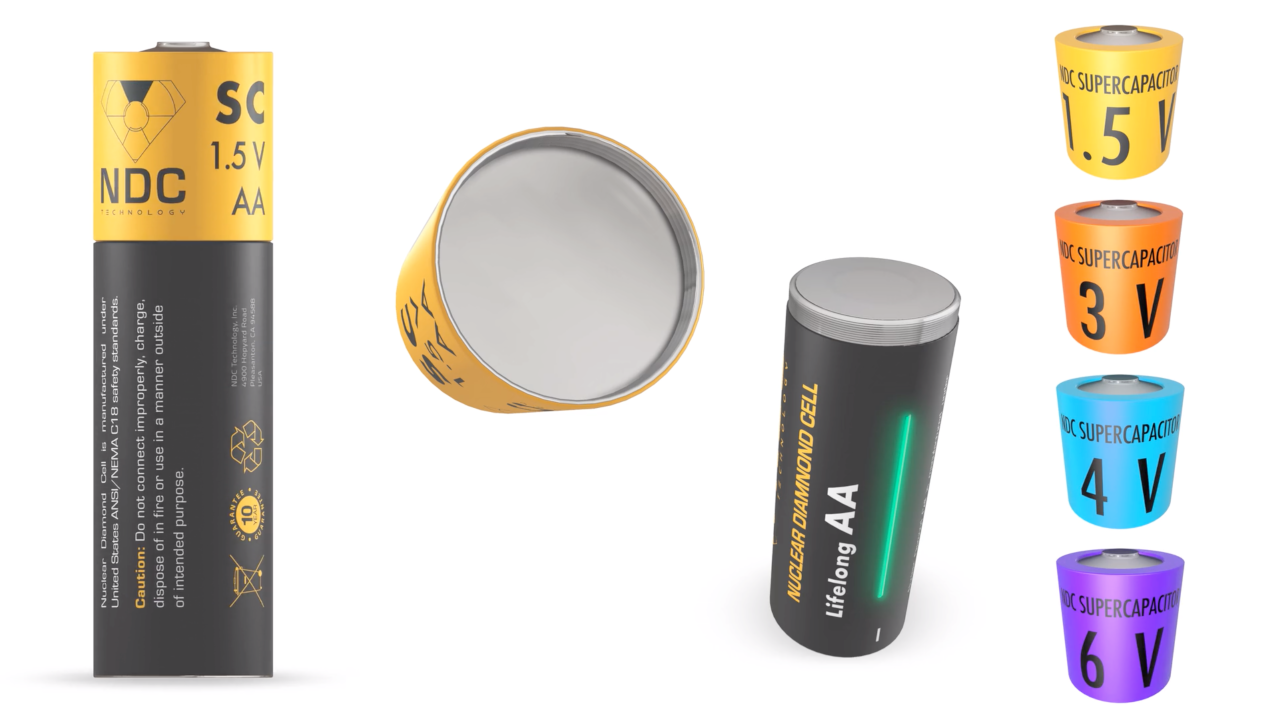
The Japanese have in fact developed batteries that can last for hundreds of years. They are based on synthetic diamonds and radioactive isotopes. According to the researchers, such batteries are suitable, for example, for space equipment. They, of course, have disadvantages, but there are also many advantages.
The authors of the project are scientists and engineers from the National Institute of Materials Science (NIMS). As far as can be understood, the Japanese are going to commercialize their invention, so they do not disclose all the details of the battery design. But, in general, it is possible to understand what is what.
What are these elements and why are there diamonds?
According to the source , the Japanese battery has three main cells. Two of them are radioactive, and the third is actually a diamond. As mentioned above, this mineral is artificial, so the cost of the entire system is not exorbitant.
Synthetic diamonds have been used in industry for many decades. They are created in laboratory conditions, their characteristics are close to natural, but the cost is several tens of times lower.
As for the radioactive elements, these are isotopes of carbon and nickel with a long half-life. For carbon-14, it is 5700 years, and for nickel, 63-100 years. The combination of the two isotopes allows for longer battery life.
Diamonds serve as electrodes. Isotopes generate beta radiation, while diamonds generate electric current. In order to protect the environment and people, the element is placed in a metal shell. Glass, metals, plexiglass do not allow beta radiation to pass through, so ordinary aluminum is enough to make the battery completely safe. It is of the beta electroplating type.
If the elements are used only in the space industry, then there is no problem with their disposal - all the same, the systems are sent to space and to other planets. But if you use diamond batteries on Earth, you will have to develop a safe and reliable recycling process.
There is a prototype, but something needs to be improved
As mentioned above, this battery has both advantages and disadvantages. The benefits are solid.
First, radioactive elements can be taken from nuclear waste. The isotope carbon-14 is used in many industries, science and medicine. So, it is used for radioisotope dating and diagnosis of certain diseases of the gastrointestinal tract.
At the same time, NPP waste with carbon-14 (and it accumulates on graphite rods from reactors). It is both expensive and difficult to store such waste, as it requires special protection methods. So if diamond batteries are put on stream, then the problem of waste can at least partially be solved.
Secondly, they are extremely durable, as has been said more than once. You just don't have to worry about the energy supply.
Third, such elements are reliable. There is nothing special to fail there, except perhaps with mechanical stress. “They can operate even at high temperatures, and they can be used, in particular, in space equipment and machines for mineral exploration,” said Satoshi Koizumi, co-author of the diamond battery project and an employee of NIMS.
Fourth, the design of diamond batteries is simpler than the design of plutonium-fueled RTGs, which are now used in spacecraft.
BUT. As always, there is a fly in the ointment in this whole barrel of honey. Namely, the low power of the battery. So far, the prototype produces only 1 microwatt of power, so in order to provide energy to the spacecraft, either a huge battery is needed, or the element's refinement. And it is in this direction that the representatives of NIMS will act.
Diamond batteries as a trend
Back in August, we wrote that the American startup Nano Diamond Battery presented a prototype of a beta-galvanic battery that can last for thousands of years. And yes, they also use diamonds and carbon-14. The Americans also have a prototype, plus their element has already passed several stages of testing.

The American battery is not a secret, and third-party scientists have studied the prototype of the battery. The safety and effectiveness of the beta galvanic battery has been confirmed at Lawrence Livermore National Laboratory and Cambridge University's Cavendish Laboratory. Moreover, competitors of the prototype NDB battery demonstrated 15% efficiency in energy production. And in the development of a California startup, thanks to a synthetic diamond structure, which acts as a semiconductor and a heat sink at the same time, the efficiency reached 40%. The inner core is "phonite" up to 28,000 years, so the batteries will last much longer than the equipment in which they are installed.

Nano Diamond Battery offers beta galvanic batteries in a variety of form factors, including the familiar AA, AAA, 18650, CR2032 and others. In theory, they can work in conjunction with the lithium-ion batteries found in most modern devices. During operation, the "diamond" battery will transfer excess electricity to the lithium battery.
In general, it looks like diamond elements are the new trend. If it is possible to increase their power, then the batteries can be used not only in the space industry, but also on Earth. Of course, with an eye on safety, - after all, if the metal shell is damaged, and beta radiation will affect the objects surrounding the element.
Nonetheless, Americans remain optimistic. “Imagine an iPhone. Our design would fully charge your battery from scratch five times an hour. Imagine this. Imagine a world where you don't have to charge your battery at all during the day. Now imagine a week, a month ... How about decades? This is what we can do with our technology, ”startup employee Neil Niker said about NDB development.
